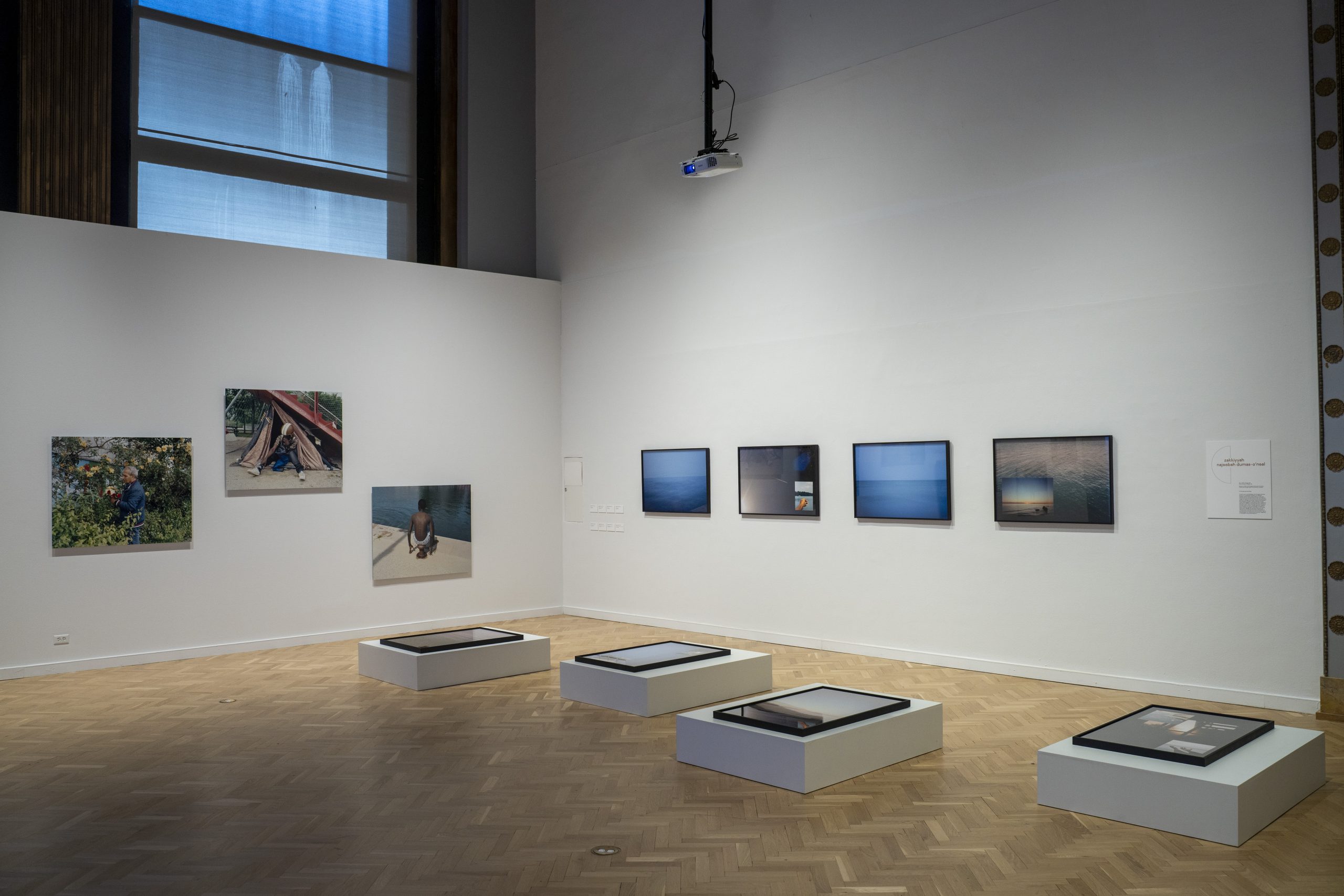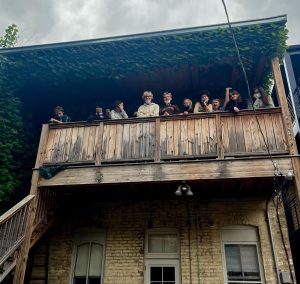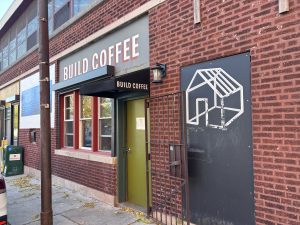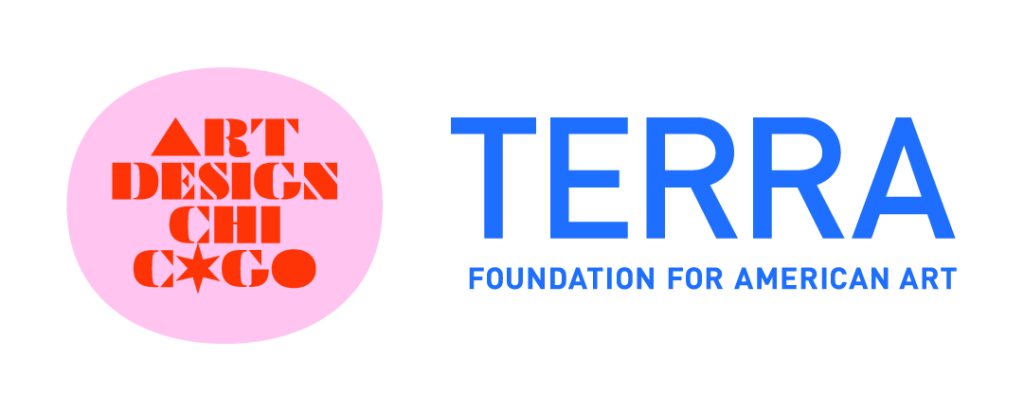
This article is presented in conjunction with Art Design Chicago, an initiative of the Terra Foundation for American Art that seeks to expand narratives of American art with an emphasis on the city’s diverse and vibrant creative cultures and the stories they tell.
“A city is first people and other life forms inhabiting a space together,” says Opening Passages co-curator Pascal Beausse. Framing cities as a clustering of life forms brings up large questions about urban life: what does it mean to inhabit a big city while transforming it? What can we make of interdependency that inevitably emerges with the organization of life? How can we sensitively interact with each other and our surroundings? These questions, among others, are a starting point for the work in this trans-Atlantic group exhibition, a collaboration between Villa Albertine, Ateliers Médicis, and CNAP (Centre National des Arts Plastiques).
Opening Passages: Photographers Respond to Chicago and Paris is an exhibition of five French and five American photographers across four Chicago venues. The American photographers who explore these questions are Marzena Abrahamik, Jonathan Castillo, zakkiyyah najeebah dumas o’neal, Tonika Lewis Johnson, and Sasha Phyars-Burgess. The French artists include Gilberto Güiza-Rojas, Karim Kal, Assia Labbas, Marion Poussier, and Rebecca Topakian.
From a logistical standpoint, seeing this exhibition in its entirety requires traveling from one end of Chicago to another—in addition to the large Cultural Center exhibition, there are also works installed at 6018 North in Edgewater, BUILD Chicago in Austin, and Experimental Station in Woodlawn. A tenet of the exhibition is to challenge the notion of a cultural “center” in the city, made evident by the decision to make all four venues free and accessible to various neighborhoods on the outskirts of Chicago. It isn’t just in theory that we should de-center conventional spaces like large museums and galleries when exhibiting art, but in practice. As much as the Loop and its many beautiful art spaces are building blocks of Chicago’s cultural landscape, Villa Albertine and Atelier Médicis demonstrate that an experimental space in Woodlawn, a community nonprofit in Austin, or a renovated home/gallery space in Edgewater could (and should) be treated equally as artistic hearts of the city.
While the three satellite venues feature only some overlapping artists, certain themes about urban life echo throughout the ambitious exhibition, creating dialogue between two diverse, sprawling cities in Opening Passages. This piece is divided along three of those throughlines, and incorporates interview clips as well as other sonic elements embedded throughout incorporating French language.
* * *
Transit/Mouvement
After attending a panel featuring Parisian photojournalist Assia Labbas and Chicago-based artists Tonika Lewis Johnson and zakkiyyah najeebah dumas o’neal having illuminating conversations about movement and change through their respective cities, I hopped on the Red Line from Garfield Station to the end of the the north side for errands in Little India. I sat in the train for nearly forty minutes, as Labbas did on the RER-B, the Parisian train that runs the length of the city from north to south. In her installation RER B-ANLIEUS (on view at the Cultural Center as well as Experimental Station), Labbas presents the train line as an “axis that reflects the scale of the region’s socio-economic disparities.” The slideshow she creates using photographs taken in peripheral neighborhoods of Paris is mounted on the walls in retro Kodachrome slides as well as projected onto a screen accompanied by the voices of riders discussing their journeys.
Similarly, Karim Kal’s work is framed by a train line, but shifts the focus away from people and onto the infrastructure and built environment on the outskirts of the Parisian landscape. If Labbas’ gaze is out (through the train’s windows), Kal’s is in (through the brutal structures of the exurbs onto the dark voids they frame). He casts life with an uncanny atmosphere with his large-scale, enigmatic photographs of stations and their features, including security cameras and Parisian hostile architecture following the Ligne D. His photographs bring us into a sense of eerie, empty darkness not often associated with a bustling city. There is an opacity to the void-like darkness framed by train tunnels, platforms, or desire paths. The thread of a city is, to some extent, always hidden from us—everything conceals something else. He says, what interests him in his work is our “collective responsibility to create spaces for people to live.” With one series of five photographs in the Cultural Center exhibition, more of Kal’s work is also installed at BUILD Chicago, in Austin.
Rebecca Topakian’s work encourages us to look up in the rush of the city. Her series, named (n=6-9) referencing the enzyme that gives the parakeets of Paris their particular bright color, is printed on silk flags and hung above the exhibition. These art pieces were produced during the early stages of the COVID-19 pandemic, and are fuzzy pictures of “invasive” Parisian parakeets printed onto silk flags and hung from the ceiling. It would be easy to miss her work if one doesn’t take the time to look above, and it takes a moment to discern what the pictures are of, given that the parakeets are blurred by motion. In the peculiar citywide stillness, she noticed a nesting colony of birds just down the block from her apartment and began to photograph them. The parakeets and other nonhuman ecology of the city continued onward, without regard for the borders and restrictions inherent to human uses of space. In such a fraught moment for humanity, Topakian’s turn to document the movements of other life forms, with whom we share space, shows how much the city is in motion, even if we are still.
* * *
Travail/Work
“One subject is shown to have previously been a journalist holding a microphone as if interviewing a ladder, now being trained as a construction worker. This transformation from someone whose work was once highly visible to one whose work falls into what Güiza-Rojas describes as “invisible” is particularly striking.”
Métro, boulot, dodo is a cheeky French idiom akin to ‘another day, another dollar,’ specific to the working-class Parisian experience. Translated, the rhythm of urban life is métro/subway, boulot/a job or a gig, dodo/baby-talk for going to sleep. The representation of work life or hustle in Paris is depicted in Gilberto Güiza-Rojas’s series Territoire-Travail/Territory-Work, which consists of five collages. Each features an image of migrants taking on new trades at Afpa, a vocational training center outside the city. Superimposed on these portraits is an image of the same subject performing gestures of the job they had before arriving in Paris and their need to take up a new trade, which is often an “invisible” profession.
Güiza-Rojas’ use of collage and staging innovatively layers the different professions of his subjects, and by extension, the different identities and lives they’ve held across their migratory trajectories. One subject is shown to have previously been a journalist holding a microphone as if interviewing a ladder, now being trained as a construction worker. This transformation from someone whose work was once highly visible to one whose work falls into what Güiza-Rojas describes as “invisible” is particularly striking. This series honors the individuality and the complexity of their journeys beyond their work which keeps the city functioning.
On the American side, Jonathan Castillo’s work also explores how migrant subjects make their way through work and environments in a new city, specifically photographing business owners throughout Chicago’s diverse neighborhoods. His portraits are set against intensely colorful backdrops of eclectic shops and restaurants that are typically crammed with culturally specific goods (Ukrainian and Polish flags in one; saris from Devon Ave in another; boxes of fortune cookies in the back of a restaurant). We can feel the earnestness with which these businesses are built, and see the tangible pieces of their own cultures that are manifested in their American entrepreneurial endeavors, much like how Territoire-Travail brings to the forefront the implications of work as a migrant in both cities.
Castillo’s scenes of migration and work, along with those of Gilberto Güiza-Rojas, render rhythmic aspects of city life as a migrant worker (whether due to the nature of the labor or the position of the laborers in the city) hypervisible.
“Photographs ask a lot of questions if you do them well,” said Castillo. “When you look at a portrait, there’s more room for the viewer to see, say things like, well, I wonder what’s going on in this person’s head. What are they thinking? What is this person’s life like? I think when people ask questions about one another, that’s how people connect.” In their thoughtfully staged images of workers who may not often be considered for long enough to bring up these questions, Castillo and Güiza-Rojas invite us to slow down to witness the marginalized labor (and laborers) within the mechanisms of the city.
* * *
Change/Changement
The urban legend backstory for Topakian’s work is that in the 1970s, a bus carrying parakeets being imported as exotic pets via Charles de Gaulle airport crashed, disastrously releasing a new species into the delicate Parisian avian ecosystem. Iterations of the same parakeet invasion occurred in global cities across Europe around the same time many people were importing animals as decorative household ornaments from tropical colonies.
“The urban legend backstory for Topakian’s work is that in the 1970s, a bus carrying parakeets being imported as exotic pets via Charles de Gaulle airport crashed, disastrously releasing a new species into the delicate Parisian avian ecosystem.”
“At any given time, a city is moving towards a drastically different iteration of itself, as are its various life forms; Topakian’s birds are a reminder that whether a change is labeled and interpreted as harmful or beneficial, change is in the end simply a constant fact of urban life, and the decision is ours how we interact with it.”
Her pieces mais qu’est-ce qu’invasif veut dire? (meaning: but what does invasive mean?), c’est une famille plus à nourrir (that’s one more family to feed), and ils ne sont pas fautifs mais ce n’est pas leur milieu (it’s not their fault, but it’s not their environment), are a mixture of lines from comment sections both from articles about the “problem” of the “invasive” parakeets as well as about the influxes of migrants from many former colonies into Paris. Chicago is currently also in the process of integrating tens of thousands of migrants from South America and concurrently the geography of Paris is being rapidly reworked by the coming 2024 Summer Olympics, both cities are in moments of change that will mark significant changes in their ever-shifting landscapes.
At any given time, a city is moving towards a drastically different iteration of itself, as are its various life forms; Topakian’s birds are a reminder that whether a change is labeled and interpreted as harmful or beneficial, change is in the end simply a constant fact of urban life, and the decision is ours how we interact with it.
The evolution of a place and its people are shaped by many forces: economic, ecological, cultural, and political. Marzena Abrahamik’s work reflects the changes in cultural attitudes resulting from conflicts in Europe and a subsequent influx of Polish migrants to Chicago. Abrahamik’s deeply personal and political narratives highlight how countries and homelands shape us, as much as we shape them. Her series, Return, consists of five framed photographs and two larger collages which she installed on-site. The photos in the collage are a mélange of family photos, staged photographs, and Polish iconography (recognizable national symbols and mascots, Catholic icons, magazine photos, Polish landscapes). Collaged into large glass frames, Abrahamik’s images appear to be floating pieces of Polish and American identities, both on cultural and familial levels. Much like Topakian’s project hints at, though, there is an element of a melancholic perpetual foreignness that permeates Abrahamik’s work, a powerful meditation on the impossibility of assimilation into Chicago for many Polish migrants.
* * *
Environment/Environnement
The title of Marion Poussier’s series, On est là/We Are Here, references a French protest chant popularized during the 2018 gilets jaunes/yellow vests protests. She photographs people along the Canal Saint-Denis, which runs through some of the most underserved neighborhoods of Paris, showing urban waterfronts as a critical public space. The community in this part of Paris will be heavily impacted by the construction of new routes and structural changes being made to the city in preparation for the 2024 Summer Olympics. Through her art practice, Poussier is capturing crucial moments of a community’s relationship to its environment at risk of erasure.
One of Poussier’s images, Joy and Harry, shows two adolescents in conversation under a bridge against a graffiti-filled wall, with one cupping the other’s chin intimately. Others show groups of friends, or people using the canal water for washing. This series shows how intricately the environment and access to the canal are tied to the lives of the neighborhood inhabitants, and the key ways that the water serves the community.
Connections to water and feelings of belonging are also, in zakkiyyah dumas o’neal’s work, a poetic communing to be had with the city’s landscape. The series, in the open you are here (2023), also centers around a community’s relationship to the environment, specifically to water (calling to mind how Poussier conceives of the canal). Her still images of Chicago’s Lake Michigan, sometimes featuring her partner’s hands outstretched toward the calm water, encompass an intimacy in solitude outside the gaze of others.
For dumas-o’neal, photography represents “an intimate language of gathering and assembling information that is personal.” Against the chaotic and heavy experience of being in a city, and specifically experiencing the city as someone confronted daily with the impositions of race, gender, work, and other structures acting on their lives, Lake Michigan in particular can serve as a space of universally accessible calm and leisure. Influenced by Kevin Quashie’s notion of “Black aliveness,” dumas-o’neal centers her everyday relationships with the built and natural environments around her, moving away from the omnipresent expectation to be grappling with our political and social realities at every moment.
* * *
Intimité/Intimacy
Inherent to living in a city is the friction of our stories being inextricably always about our environment and its people. Tonika Lewis Johnson’s series, Belonging (2023), is a continuation of a project she began in Chicago about experiencing the city as a racialized person, asking young people of color to talk about a place when they were made to feel like they didn’t belong, and then photographing them in that location. Alongside the photographs, where the subjects are looking straight on at the camera, Johnson has recorded interviews where the subjects talk about the experience they had in that place. There is a unique intimacy created by the combination of a still photograph and recorded sound; our focus is entirely on the storyteller’s experience, and their gaze is turned on the viewer describing situations when an oppressive gaze was imposed upon them. In extending her project to Europe (inspired, in part, by the video collaboration between A$AP Rocky and British rapper Skepta), Johnson found a wealth of dialogue to be had across languages and cities.
In the works of Sasha Phyars-Burgess, who came to Chicago as part of the Diane Dammeyer Fellowship in Photographic Arts and Social Issues, we see video clips and portraits taken in the Austin neighborhood of Chicago as well as in Clichy-sous-Bois, a neighborhood of Paris where she was invited to do a residency by the Ateliers Médicis. In addition to the still photography installed at BUILD and the Chicago Cultural Center, Phyars-Burgess’ fellowship culminated in a video installation on view only at the Cultural Center, where she captured intimate moments from the lives of youth affected by gun violence participating in a program to equip them with job skills. A large part of her work seeks to excavate moments of intimacy, joy, and a generally full range of emotion in a context where so often, broad strokes paint an incomplete understanding of a community. As her series moves from the training center to the insides of peoples’ homes and families, the scenes both candid and staged reveal that in every interaction, there is an intimacy to be found the longer you stay and observe a neighborhood.
* * *
CONCLUSION/CONCLUSION
Through the eyes of these ten photographers they build a cosmopolitan collage of different ways of seeing two cities. What their patterns reveal–whether it is invisible labor, transnational parallels of racialized experiences, or the history and communities that constantly join and change the city–is a practice of engaging with our surroundings deeply.
Poussier: “J’ai l’impression qu’il y a un qui se fait parce qu’on parle aussi, en tout cas dans les projets que j’ai pu voir sur Chicago, de choses qui se font un peu sur les banlieues ou les communautés un peu mises à l’écart. Après, je pense que dans les discussions qu’il va y avoir, les liens vont se créer, peut-être. [I have the impression that there is a dialogue taking place because we are all talking, at least in the projects that I have seen, about things that are being done in somewhat sidelined communities. Afterward, I think that more discussions will take place, and links will be created.]”
Phyars-Burgess: “All of our work is trying to look and give voice or light to certain areas in the world, the peripheries of Paris, or the peripheries of Chicago, or neighborhoods in Chicago. I think all of us are looking for ways to make sense of the world that we’re in. You know, whether that be through parakeets, or if that be through, you know, riding the RER B I think all of us are trying to make sense of the landscape in whatever ways we, we, we can, you know?”
Reaching my destination at the end of the red line, my mind remains with the artists of Opening Passages and the ways of inhabiting the city that they’ve pushed me to consider. Anonymous riders and I ignore each other companionably, staring out the window or at our phones, saturated by a constant blur of visual stimuli. At several points in Opening Passages, we are encouraged to notice more of each other, the long commutes, the moods of Lake Michigan, city-dwelling wildlife, and structural designs that pattern the world around us.
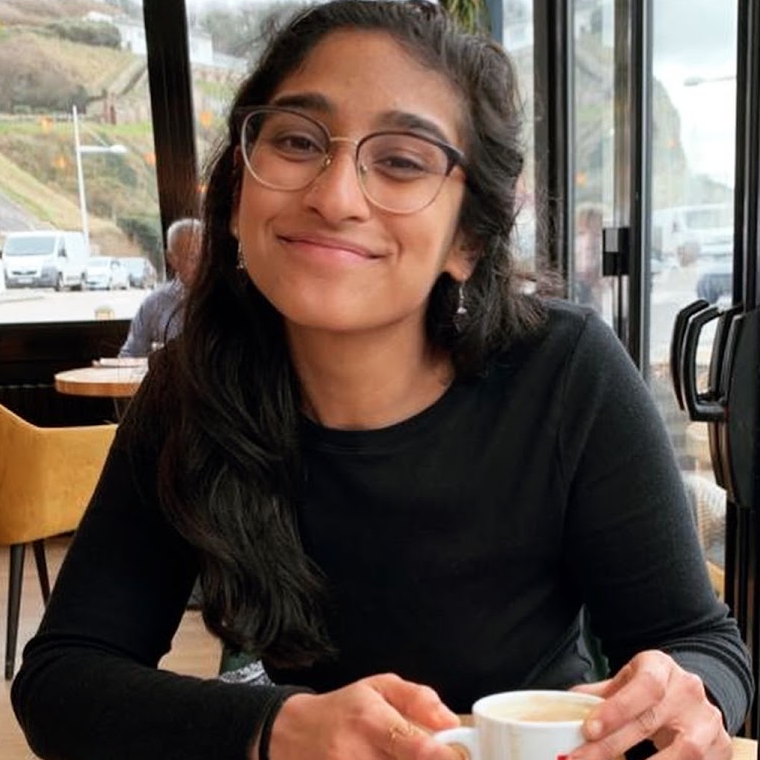
About the author: Mrittika Ghosh (she/her) is a Bengali-American reader, writer, and translator currently based in Chicago. She holds a BA from Mount Holyoke College and an MA from the University of Chicago. She has also been a bookseller, oral historian, and educator. Her writing focuses on queerness, migration, and postcolonial art in Francophone and South Asian diasporic contexts.
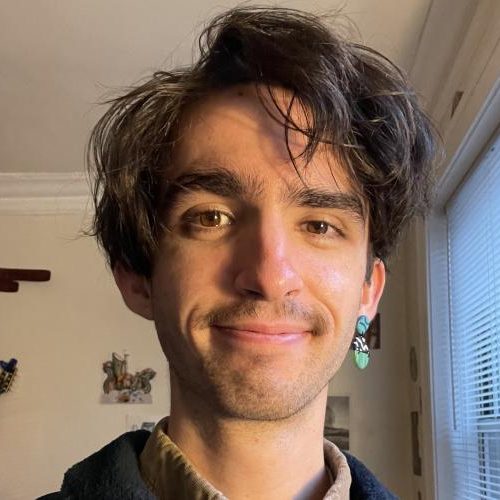
About the AV producer: I make things for public radio and podcasts (some collected here), and I’m the associate producer at The Dig. At different times, I’ve also worked at State of the Human, Radiolab, Generation Anthropocene, Raw Data, Third Coast, and the Seminary Co-op Bookstores. You can reach me at jackson.w.roach@gmail.com.
